Complete Russian Blue Domestic Cat Care Guide Cost, Health & Tips in 2025
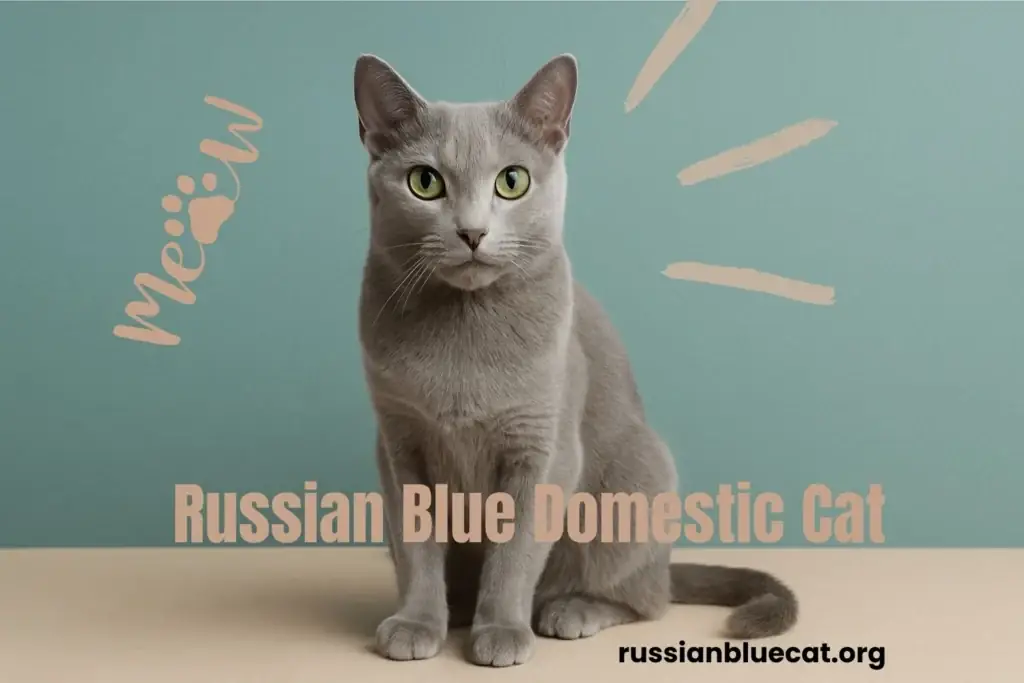
What is a Russian Blue Domestic Cat?
The Russian Blue Domestic Cat is a medium-sized, short-coated breed that is prized for its beautiful silver-blue coat and captivating emerald-green eyes. Such cats are commonly referred to as “domestic” due to their acceptance of living in a domestic environment, rendering them one of the most popular pet animals in the world.
Distinctive Characteristics of the Russian Blue Cat
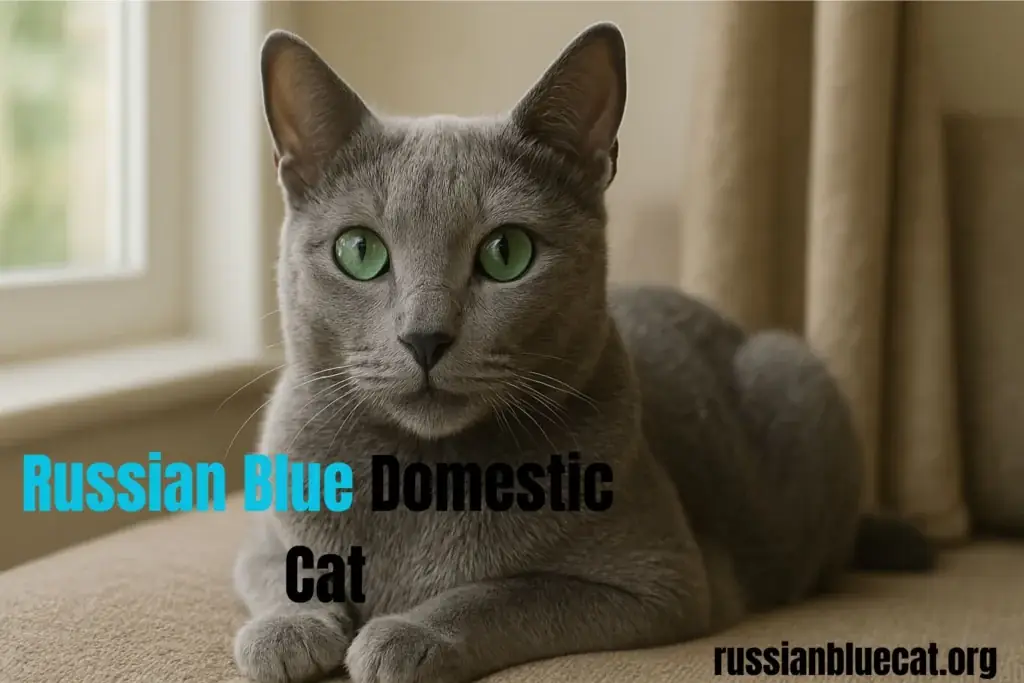
- Coat: A plush, thick, double coat of soft velvet texture.
- Color: A glimmering silver-blue color that appears to change in varying light.
- Eyes: Bright green eyes that are in contrast to the blue-gray coat.
- Build: Lean, refined, but muscular with legs that are long and a poised stance.
Originally from Arkhangelsk, Russia, the thick coat of this breed kept it warm under freezing conditions. Russian sailors are said to have brought them to England in the mid-1800s, where they were an instant hit among the aristocracy.
Personality & Temperament at Home
When you bring a Russian Blue Domestic Cat home with you, you’re getting a considerate, sensitive, and loving companion. Their temperament makes them perfect for families, singles, and elderly folks.
Mellow Temperament
They are laid-back and loving, tending to form close bonds with one or two people.
Quiet Companions
In contrast to Siamese cats, Russian Blues won’t be holding noisy conversations. Soft, sweet meows will be used only when they really need some attention.
Affection with Independence
They adore affection but are never clingy ideal for pet owners who crave balance.
Playful & Intelligent
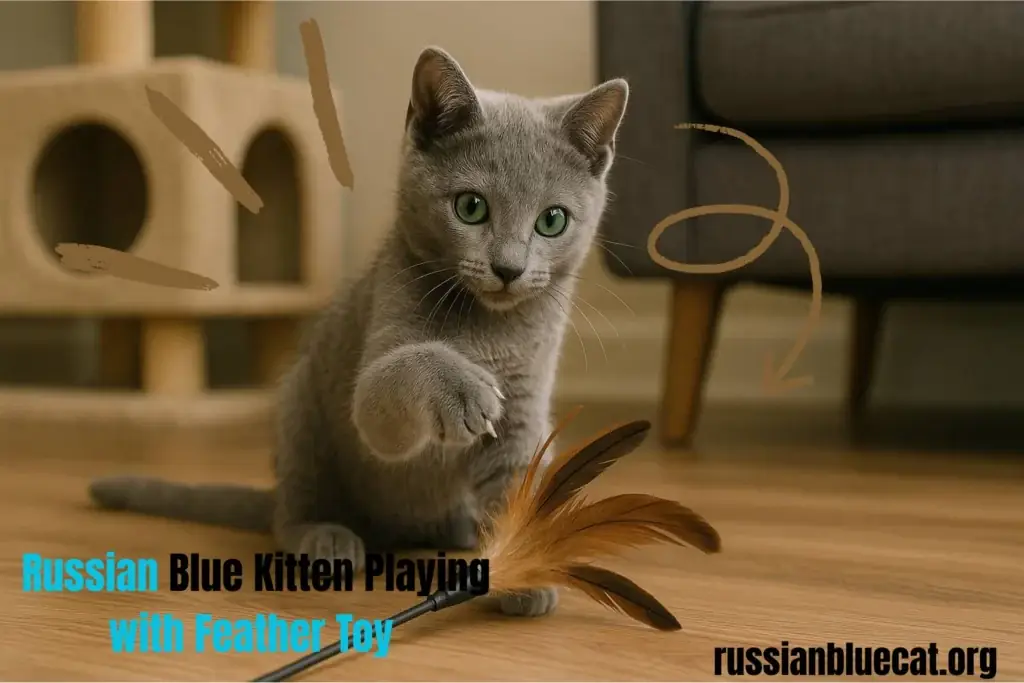
Russian Blue kittens are playful, inquisitive, and adore puzzle toys, feather wands, and climbing towers. They are still playful long after they become adults.
Good with Families
Their even temperament makes them ideal for families with kids and even multi-pet households, including peaceful dogs.

Living Environment Needs
The Domestic Cat Russian Blue is very adaptable, but to make them contented, their home surroundings are important.
Apartment-Friendly Cats
They love being indoors, so they are ideal for living in an apartment. They have a medium energy level, which means they do not require enormous space, just stimulating toys and secure places to climb.
Safe Spaces
Russian Blues are timid and reserved around strangers. Provide a quiet hiding place with a comfortable bed or cat tree where they can escape when stressed.
Child & Pet Compatibility
- With Children: They like to play gently with considerate children.
- With Other Pets: They are compatible with cats and gentle dogs but need slow introductions.
- Quiet Homes: They don’t enjoy noisy, disorganized homes. A peaceful, well-ordered home is best.
Home Daily Care & Grooming
Having a Russian Blue Domestic Cat is quite low maintenance compared to longer-haired breeds.
Grooming Requirements
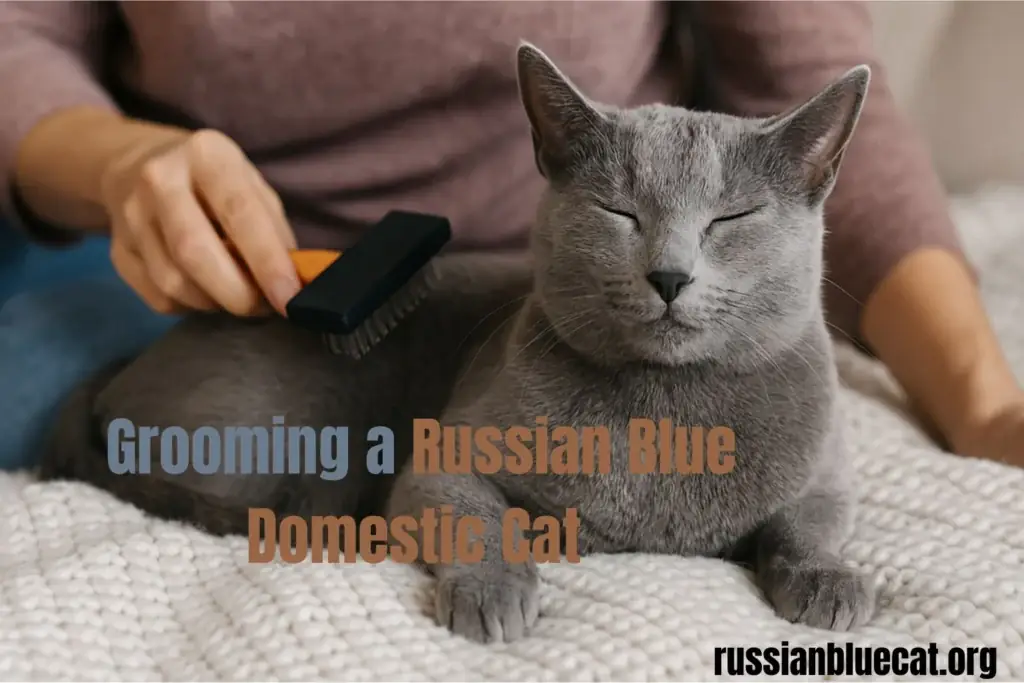
- Brushing: Weekly or every fortnight to remove dead fur and keep their velvety coat looking its best.
- Bathing: Only occasionally needed, due to their self-grooming nature.
- Nail Trimming: Every 2–3 weeks to stop overgrowth.
- Dental Care: Brush their teeth daily to prevent gum disease.
Home Daily Care Tips
- Supply scratching posts to spare your furniture.
- Schedule daily play periods for exercise and interaction.
- Utilize soft bedding and a warm resting spot.
Feeding & Nutrition for Indoor Cats
The Russian Blue Domestic Cat is a robust eater with an aptitude to gain weight quickly if meals are not divided into portions.
Diet Guidelines
- High-Protein Diet: Opt for top-tier cat food with real meat like chicken, turkey, or salmon.
- Low-Carb Options: Steer clear of high-grain or filler-rich foods that promote obesity.
- Hydration: Support water intake with fresh water or a cat fountain.
- Feeding Routine: Feed 2–3 small meals rather than free-feeding.
- Treats in Moderation: Treats are used primarily for training and bonding.
Training & Socialization Tips
The Russian Blue Domestic Cat is an exceptionally intelligent animal, and training is both enjoyable and worthwhile.
Training Tips
- Litter Box Training: They learn rapidly, usually picking it up within days.
- Clicker Training: Works well with positive reinforcement.
- Tricks & Commands: Can be trained to fetch, high-five, or even walk on leash.
- Check our detailed guide on Russian Blue Cat Training.
Socialization Tips
- Gradually introduce them to new individuals and animals.
- Offer vertical spaces such as cat trees for secure observation.
- Establish a routine to minimize anxiety.
Health and Longevity in the Home
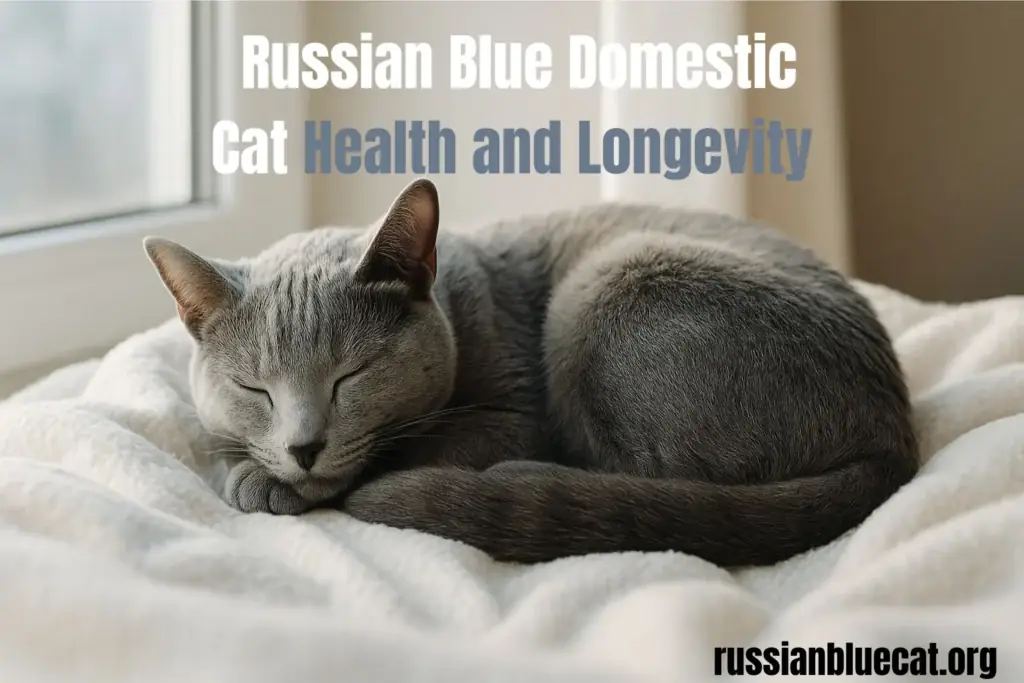
The Russian Blue Domestic Cat is typically a healthy breed with a lifespan of 15–20 years. However, regular health care is important to a long, joyful life.
Common Health Issues
- Obesity: Monitor portion size, as they are likely to overeat.
- Dental Health: Brush teeth or give dental treats.
- Heart Conditions: Some will have hypertrophic cardiomyopathy (HCM).
- Urinary Tract Health: Maintain good hydration and quality food.
Regular Vet Care
- Annual check-ups and vaccinations are a must.
- Spay/neuter if it hasn’t been done yet.
- Standard blood tests for geriatric cats.
For a closer examination of health issues, prevention advice, and wellness plans, see our complete Russian Blue Cat Health Guide .
Cost of Keeping a Russian Blue as a Household Pet
When deciding to adopt or purchase a Russian Blue Domestic Cat, consider the cost.
Initial Expenses
- Adoption fee: $100 – $300
- Price from a breeder: $800 – $2,000 (more for pedigree kittens)
- Supplies: $150 – $300 (litter box, bed, toys, scratching posts)
Recurring Costs (Annual)
- Food & Treats: $300 – $600
- Litter: $200 – $400
- Vet Care: $150 – $300
- Insurance (optional): $250 – $500
- Miscellaneous (toys, grooming, accessories): $100 – $250
Plan for about $700–$1,200 a year to look after your cat, excluding emergencies.
Adoption Tips for a Domestic Lifestyle

Adopting a Russian Blue Domestic Cat provides an opportunity to provide a loving home for a needy cat.
Steps to Adopt
- Investigate rescues that specialize in Russian Blues or search local shelters.
- Fill out an application with information on your lifestyle and home.
- Get to know the cat and make sure personalities are compatible.
- Prepare your home with all essentials before adoption day.
- Schedule a vet check-up right after bringing them home.
Why Adoption is a Great Choice
- More affordable than buying from a breeder.
- Gives a second chance to a cat in need.
- Many Russian Blue mixes are available with the same personality traits.
For a full step-by-step process, visit our Russian Blue Cat Buyer and Adoption Guide.
Frequently Asked Questions
Conclusion: Is the Russian Blue Domestic Cat Right for You?
Choosing a Russian Blue Domestic Cat is a rewarding decision for pet lovers who want a beautiful, intelligent, and loyal companion. They thrive in calm homes, adapt well to apartment living, and bond deeply with their families. With a lifespan of up to 20 years, they can be your faithful companion for decades.
If you’re willing to adopt a cat that introduces intelligence, playfulness, and affection into the life of your home, the Russian Blue Domestic Cat could be the ideal member to join your family.
For additional resources and information on the breed, you can also visit the Cat Fanciers’ Association (CFA) a renowned worldwide authority on pedigree cats.






